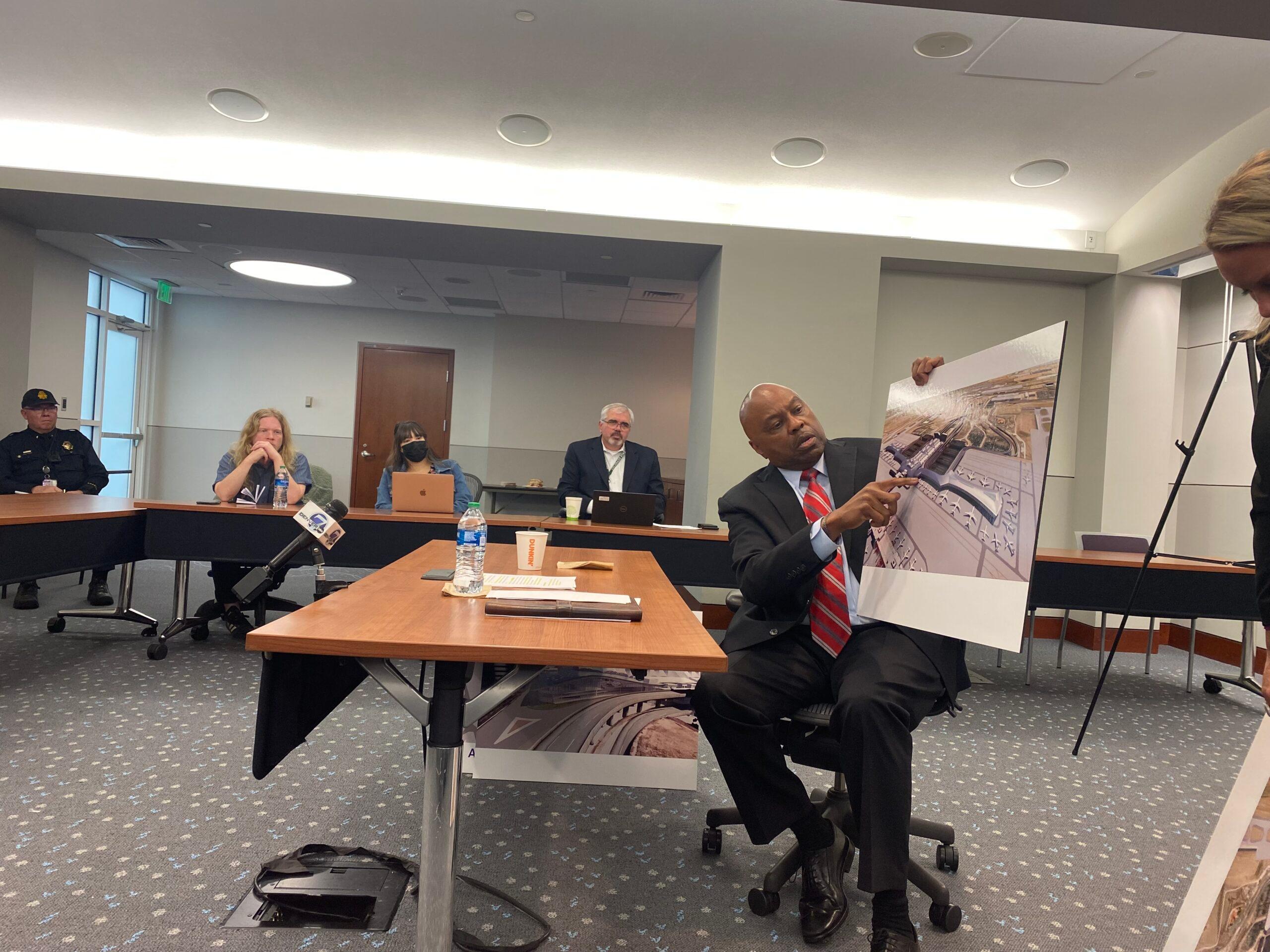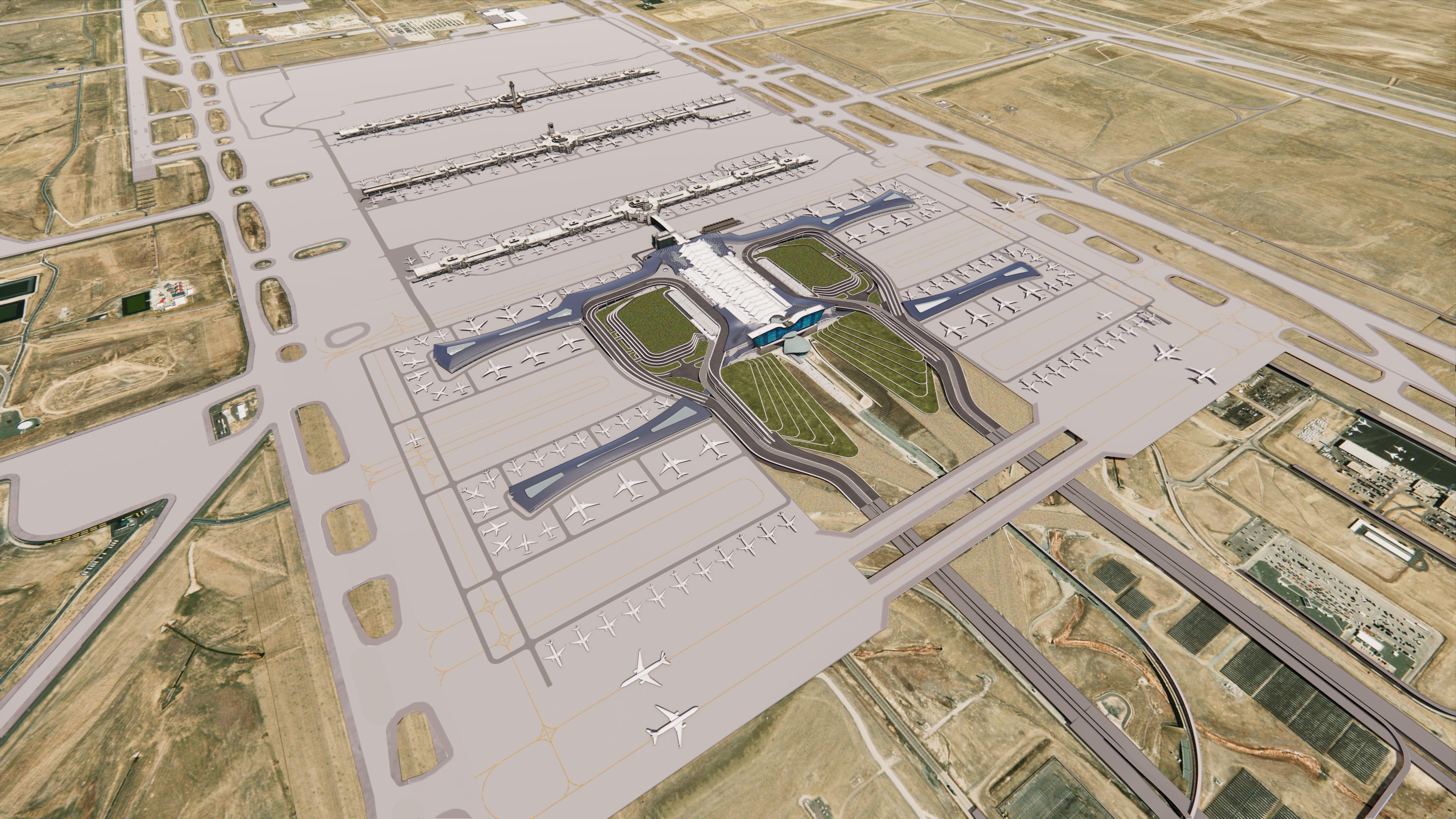The constant construction at Denver International Airport (DIA) is a reminder that traffic is growing exponentially. The airport on track to reach 100 million passengers in 2027 -- five years ahead of schedule.
But DIA leadership is already looking far beyond this and the next decade to 2045, when the airport expects to reach 120 million passengers in just over two decades.
To manage that traffic, the airport will need major expansions. At a press conference Wednesday, DIA CEO Phil Washington laid out his vision for the airport and what those changes include: expanding the tented Jeppesen Terminal to add additional check-in counters and TSA checkpoints and building four new concourses to accommodate 100 new gates.
Unlike Concourses B and C, the new concourses would be walkable from the main terminal.
"We're preparing it [the airport] for the immediate time frame with security, wait time improvements and things like that, but we're also looking out to 2045 as well because I think that it is our responsibility as infrastructure professionals to prepare for the next generation of passengers that come through here, even 20 or 30 years from now," Washington said.

With the airport still completing its years-long Great Hall construction project, groundbreaking on the expanded concourses is still a ways off.
But Washington said that the airport will begin planning some initial elements of the expansion in the next capital improvements process starting next year.
In the coming years, the airport also plans to upgrade existing concourses with things like new carpets and bathrooms, build a new consolidated rental car facility and add cars to the train that runs through the airport.
Washington said the airport would begin building in phases, starting with the north end of the terminal. It's not yet clear what airlines will operate at the new gates, but Washington said companies are already interested. Earlier this year, United Airlines announced plans to make DIA one of its busiest hubs, alongside Chicago and Houston, where the airline operates its largest number of flights.
"The ability to build those [new gates] in phases will allow us to negotiate with the airlines as we build those," Washington said. "My guess is that they will be spoken for very quickly."

It's still unclear how the airport will plan for increased traffic to DIA.
Congestion is already an issue along Peña Boulevard, the two-lane road leading to and from the airport. Washington said that that daily traffic has grown by more than 80% from when the city first built Peña Boulevard 30 years ago.
In addition to airport traffic, it's a headache for local residents who use the road as a major throughway in Green Valley Ranch and Montbello. DIA officials are looking into adding a lane, something climate advocates have pushed back against citing studies showing expanded highways can lead to more emissions and congestion. The problem could get worse with housing and commercial development growing in the area along with the airport's expansion.

DIA is currently undertaking a study looking at a highway expansion and other potential options for Peña Boulevard. Washington said this study and future plans will consider traffic planning for the next few decades.
"In terms of Peña [Boulevard], I mentioned the study that we are embarking on, we will finish that by the end of the year. That study will have various recommendations in it for what we can do now and what we can do in the future to alleviate traffic congestion," he said. "We will look at what we will do in the immediate term, in the near term and then in the long term."













